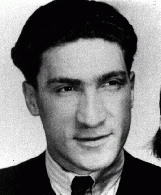You searched for: googleseo霸屏霸屏专业【TG飞机:@bapingseo】谷歌seo中的seo什么意思【TG电报:@bapingseo】帕勞google留痕轉碼收錄【Telegram:@bapingseo】13版蛙蛙斗地主JDB平台?5rISH5/392164.html
<< Previous | Displaying results 251-300 of 409 for "googleseo霸屏霸屏专业【TG飞机:@bapingseo】谷歌seo中的seo什么意思【TG电报:@bapingseo】帕勞google留痕轉碼收錄【Telegram:@bapingseo】13版蛙蛙斗地主JDB平台?5rISH5/392164.html" | Next >>
-
Liberation of Gross-Rosen
Timeline EventFebruary 13, 1945. On this date, Soviet forces liberated the Gross-Rosen concentration camp.
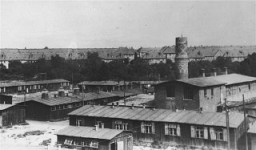
-
St. Louis Sets Sail
Timeline EventMay 13, 1939. On this date, the German transatlantic liner St. Louis left Hamburg, Germany for Havana, Cuba.

-
Last Diary Entry Written by Otto Wolf
Timeline EventApril 13, 1945. On this date, Otto Wolf, a teen diarist who chronicled his family's experience in hiding, wrote his last diary entry before his death.

-
Page from Otto Wolf's Diary
Timeline EventApril 17, 1945. On this date, Felicitas Wolf wrote her first entry in her brother Otto's diary after his disappearance.
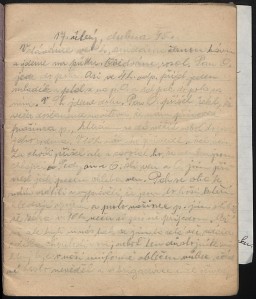
-
Frank Liebermann
ArticleExplore Frank Liebermann’s biography and learn about his experiences of antisemitism in his home town in Germany before World War II.
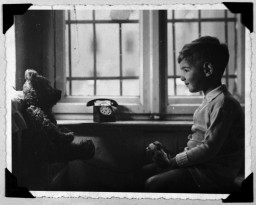
-
Vita Rivkina
ID CardBecause both of her parents had died by the time Vita was 5 years old, she went to live with her cousins. At the age of 18, Vita married Iosif Rivkin, and the couple moved to Minsk where they raised three daughters--Hacia, Dora and Berta. 1933-39: By the early 1930s, the Rivkin family lived on Novomesnitskaya Street in central Minsk, near the Svisloch River. In the 1930s the girls attended Soviet state schools and were members of the Soviet youth organization, Young Pioneers. By the late 1930s Minsk was…

-
Zuzana Gruenberger
ID CardZuzana was the youngest of three children born to Hungarian-speaking Jewish parents in the city of Kosice. She was the baby of the family, and they called her Zuzi. Her father was a tailor whose workshop was in the Gruenbergers' apartment. 1933-39: In November 1938, when Zuzana was 5, Hungarian troops marched into Kosice and made it a part of Hungary. The Hungarians changed the name of the city to Kassa. The Hungarian government was friendly to Nazi Germany and introduced anti-Jewish laws in…
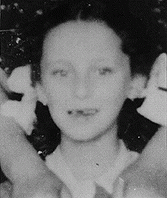
-
Henry Maslowicz
ID CardHenry's Jewish parents lived in a Polish town in which their families had lived for 150 years. The Jewish community enjoyed good relations with their Polish neighbors; the local Polish population refused to cooperate when the government encouraged a boycott of Jewish businesses during a wave of antisemitism that swept Poland in the mid-1930s. 1933-39: In the years before Henry was born, his father owned an iron and coal factory. The Germans occupied Wierzbnik on September 5, 1939. While some Jews fled,…

-
Ossi Stojka
ID CardOssi was the youngest of six children born to Roma ("Gypsies") who traveled in a family wagon. His family was Roman Catholic. Their caravan spent winters in Vienna, Austria's capital, and summers in the Austrian countryside. The Stojkas belonged to a tribe called the Lowara Roma, who made their living as itinerant horse traders. Ossi's ancestors had lived in Austria for more than 200 years. 1933-39: Ossi was 2 years old when Germany annexed Austria in March 1938. The Stojka family wagon was parked for the…

-
Bertha Adler
ID CardBertha was the second of three daughters born to Yiddish-speaking Jewish parents in a village in Czechoslovakia's easternmost province. Soon after Bertha was born, her parents moved the family to Liege, an industrial, largely Catholic city in Belgium that had many immigrants from eastern Europe. 1933-39: Bertha's parents sent her to a local elementary school, where most of her friends were Catholic. At school, Bertha spoke French. At home, she spoke Yiddish. Sometimes her parents spoke Hungarian to each…
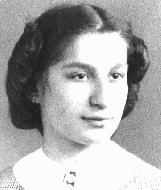
-
Warsaw district handbill announcing penalties for anyone caught assisting Jews
ArtifactOn September 5, 1942, the SS and Police Leader of the Warsaw District issued this announcement threatening the death penalty for anyone who aided Jews who had left the ghetto without authorization. This poster was put up in the wake of the mass deportation of Jews from the Warsaw ghetto to the Treblinka killing center in summer 1942. SS officials were well aware that thousands of Jews had fled the ghetto to go into hiding and urged people to turn them in. The poster reminds the city's non-Jewish…

-
Notice of Gregor Wohlfahrt's execution
DocumentAuthorities in Berlin, Germany, sent this notice to Barbara Wohlfahrt, informing her of her husband Gregor's execution on the morning of December 7, 1939. Although he was physically unfit to serve in the armed forces, the Nazis tried Wohlfahrt for his religious opposition to military service. As a Jehovah's Witness, Wohlfahrt believed that military service violated the biblical commandment not to kill. On November 8, 1939, a military court condemned Wohlfahrt to beheading, a sentence carried out one month…

-
American propaganda announcement
DocumentAnnouncement dropped by American planes on Shanghai near the end of the war. [From the USHMM special exhibition Flight and Rescue.]
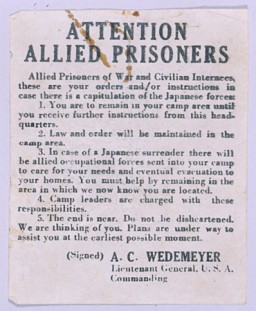
-
The Nuremberg Race Laws
ArticleThe Nazi regime’s Nuremberg Race Laws of September 1935 made Jews legally different from their non-Jewish neighbors. The laws were the foundation for future antisemitic measures .

-
Nazi Rule
ArticleAfter they rose to power in 1933, Hitler and the Nazis eliminated democratic freedoms and took control of all aspects of public life in Germany. Learn more.

-
Anne Frank Biography: Who was Anne Frank?
ArticleAnne Frank is among the most well-known of the six million Jews who died in the Holocaust. Discover who Anne Frank was and what happened to her.
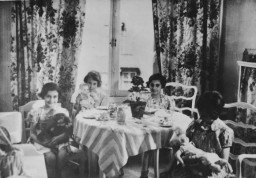
-
Lublin/Majdanek Concentration Camp: Administration
ArticleIn 1940, the Nazis established Lublin (Majdanek) concentration camp in Lublin, Poland. Learn more about camp administration.
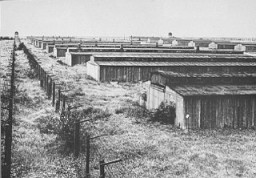
-
Reichstag Fire Decree
ArticleThe Reichstag Fire Decree of February 1933 restricted individual freedoms, and allowed Hitler's government to overrule state and local laws and overthrow state and local governments.

-
Josef Nassy
ArticleA Black expatriate artist living in Belgium upon the outbreak of WWII, Josef Nassy was held in German internment camps during the war. Learn about his experiences.
-
The Nuremberg Code
ArticleLeading German physicians and administrators were put on trial for their role during the Holocaust. The resulting Nuremberg Code was a landmark document on medical ethics. Learn more

-
Mohamed Helmy
ArticleDr. Mohamed Helmy and Frieda Szturmann helped save a Jewish family in the heart of Nazi Germany. Helmy was the first Arab recognized as Righteous Among the Nations.

-
Janusz Korczak
ArticleJanusz Korczak ran a Jewish orphanage in Warsaw. He and his staff stayed with the children even as German authorities deported them to their deaths at Treblinka in 1942.
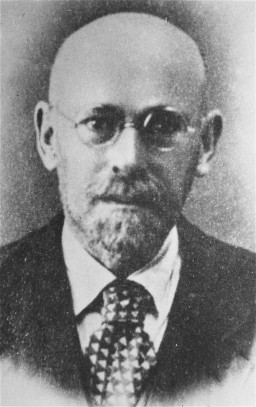
-
Anne Frank Born
Timeline EventJune 12, 1929. On this date, future diarist Anne Frank was born to Otto and Edith Frank. She would become a symbol for the children who died in the Holocaust.

-
German Jews' Passports Declared Invalid
Timeline EventOctober 5, 1938. On this date, the Reich Ministry of the Interior invalidated all German Jews' passports and required them to have a "J" stamped on them.

-
Timeline of the German Military and the Nazi Regime
ArticleKey dates illustrating the relationship between Germany’s professional military elite and the Nazi state, and the German military’s role in the Holocaust.
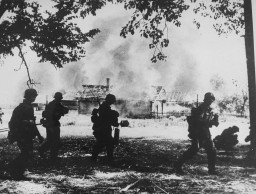
-
Gerda Blachmann Wilchfort describes the mood of passengers on the "St. Louis" after they were denied entry into Cuba
Oral HistoryGerda and her parents obtained visas to sail to Cuba on the "St. Louis" in May 1939. When the ship arrived in Havana harbor, most of the refugees were denied entry and the ship had to return to Europe. Gerda and her parents disembarked in Belgium. In May 1940, Germany attacked Belgium. Gerda and her mother escaped to Switzerland. After the war, they were told that Gerda's father had died during deportation.

-
The United States and the Holocaust, 1942–45
ArticleWhy did the United States go to war? What did Americans know about the “Final Solution”? How did Americans respond to news about the Holocaust? Learn more.

-
Kristallnacht
ArticleOn November 9–10, 1938, the Nazi regime coordinated a wave of antisemitic violence. This became known as Kristallnacht or the "Night of Broken Glass." Learn more

-
World War II: In Depth
ArticleGermany started World War II in Europe on September 1, 1939, by invading Poland. War would continue until 1945. Learn more about key events in the history of WWII.
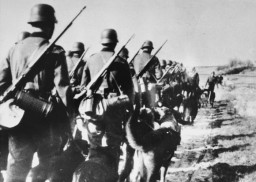
-
The Nazi Party
ArticleThe National Socialist German Worker’s Party, also known as the Nazi Party, was the far-right racist and antisemitic political party led by Adolf Hitler.

-
Stefania (Fusia) Podgorska
ID CardStefania was born to a Catholic family in a village near Przemysl. They lived on a large farm and cultivated several different crops. While her father worked with the farmhands in the fields, Stefania's mother, a trained midwife, managed the house and cared for her eight children. 1933-39: Stefania's father died in 1938 after an illness. With her mother's approval, she joined her sister in Przemysl in 1939. At 14 she worked in a grocery store owned by the Diamants, a Jewish family. They treated her like…
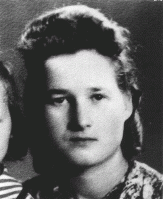
-
Hinda Chilewicz
ID CardHinda was the eldest of three children in a comfortable middle class Jewish family. Her father owned a textile business in Sosnowiec and her mother attended to the home. Sosnowiec in southwestern Poland had a growing Jewish community of almost 30,000 people. There was a Jewish hospital as well as religious schools. 1933–39: Hinda was just 13 years old when German troops invaded Poland on September 1, 1939. Three days later, they occupied Sosnowiec and terrorized the Jewish community, killing over a…

-
Urszula Kaczmarek
ID CardUrszula was one of four children born to Franciszek and Jadwiga Kaczmarek, who lived in the industrial city of Poznan in western Poland. The family lived at 11 Smolnej Street. Like their parents, the Kaczmarek children were baptized in the Roman Catholic faith. 1933-39: As one of the older children in the family, Urszula helped her mother with the housework. She was 10 years old when the Germans invaded Poland on Friday, September 1, 1939. German planes bombed Poznan that same day, and German troops…
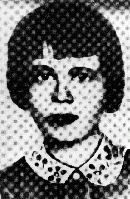
-
Karl-Heinz Kusserow
ID CardKarl-Heinz was born during World War I, while his father was in the German army. After the war, his Lutheran parents became Jehovah's Witnesses and gave their children daily Bible lessons. When Karl-Heinz was 13, the family moved to the rustic Westphalian town of Bad Lippspringe. Their home became the headquarters of a new Jehovah's Witness congregation. 1933-39: Because of the Jehovah's Witnesses' missionary work, and because their sole allegiance was to God and His commandments, their activities were…
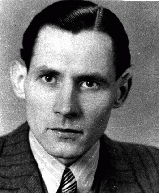
-
Catharina Soep
ID CardCatharina, called "Ina" by her family and friends, grew up in a religious Jewish household in Amsterdam. Ina's father, a successful diamond manufacturer, was president of the Amsterdam Jewish community. Ina had one brother, Benno, and a sister, Josette. 1933-39: On Sunday mornings and on Wednesdays after her classes at an Amsterdam Montessori school, Ina went to a private Jewish school where she studied Jewish history and Hebrew. Ina and her friends loved to meet in the evenings after they finished their…
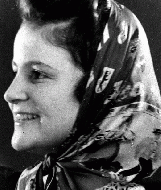
-
Samson Reichstein
ID CardSamson was raised by Jewish parents in Tarnopol. His father died when Samson was 13, and Samson went to work to help support his mother and four brothers and sisters. In October 1918 Samson married Kaethe Ert, and the couple moved to Hanover, Germany, where Samson worked as a traveling salesman. Their son Herbert was born in 1920. 1933-39: In 1938 Samson and Kaethe got their son an exit visa on America's Polish quota (since they were Polish citizens). Later that year, the Gestapo came to their door with…
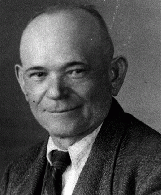
-
Eva Rapaport
ID CardEva was the only child born to nonreligious Jewish parents. Her father was a journalist. Eva enjoyed spending time with her cousin Susie, who was two years older. Eva also took special vacations with her mother. Sometimes they went skiing in the Austrian alps, and on other occasions they stayed at her uncle's cabin along the Danube River. 1933-39: When the Germans annexed Austria in 1938, life changed. Eva's father was harassed by the Gestapo for writing articles against the Germans. Her good friends…
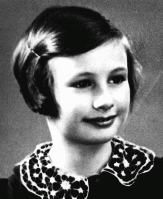
-
Nikola Mrvos
ID CardThe oldest of five children, Nikola was born in a small village in the Croatian part of Yugoslavia. Like his parents, Nikola was baptized in the Serbian Orthodox faith. After receiving his medical degree from Prague University, he married, and in 1912 moved with his wife to Serbia. During World War I he served in the Serbian army, and then settled in Novi Sad where he co-owned a medical clinic. 1933-39: Nikola and his wife raised three children in Novi Sad. Then difficult times brought on by the 1930s…
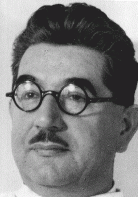
-
Helen Katz
ID CardThe youngest of eight children, Helen was born and raised in a religious Jewish family living in a town in northeastern Hungary. She was the "baby" of the family and the focus of everyone's hopes and affection. Although her Hebrew name was Hannah, her family called her by her nickname, Potyo, which meant "the dear little one." 1933-39: Helen liked school, but was afraid because some of the kids and teachers hated Jews. There was talk that there might be a war. Her mother wanted them to leave Hungary…

-
Martin Spett
ID CardKnown as Monek, Martin was the elder of two children raised by Jewish parents in the large town of Tarnow. His mother was an American citizen who had been raised in Poland. His father worked at the city's tax office. As a child, Martin liked to collect stamps and catch lizards. His parents wanted him to be a pharmacist, but he wanted to be an artist when he grew up. 1933-39: When the Germans occupied Tarnow in September 1939 after war began, Martin was 10 years old. The soldiers, in beautiful uniforms,…
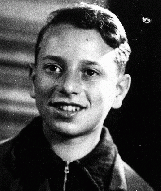
-
Ruth Freund Reiser
ID CardRuth was a child of middle-class Jewish parents living in Czechoslovakia's capital, Prague, where her father worked as a bank clerk. As native Czechs, her parents considered themselves as much Czech as Jewish. In 1933 Ruth was in her second year at a public girls' secondary school. 1933-39: The Germans occupied Prague in March 1939 and imposed many restrictions. Jews were no longer allowed to attend school, so Ruth's education stopped at age 13. Jews had to surrender many of their possessions such as…
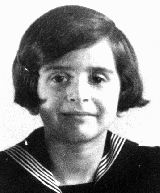
-
Gerda Blachmann
ID CardGerda was an only child of Jewish parents. They lived in Breslau, a large industrial city on the Oder River. Before World War II, Breslau's Jewish community was the third largest in Germany. Her father worked as a salesman for a large hardware and building materials company. Gerda attended public school until age 9 when she was admitted to a Catholic girls' school. 1933-39: Gerda walked through the city to see the aftermath of a pogrom. The windows of Jewish shops had been shattered. A torched synagogue…
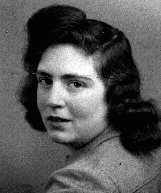
-
Jacob Wasserman
ID CardJacob was the eldest of three sons born to religious Jewish parents in the city of Krakow. His father was a flour merchant. The Wassermans spent summer vacations near Proszowice at a farm owned by their grandfather, who also ran a flour mill. 1933-39: In March 1939, at the age of 13, Jacob celebrated his bar-mitzvah. That summer, his family vacationed as usual at his grandfather's farm. They returned to a nightmare. Krakow had been occupied by the Germans on September 6. Jews were not allowed to walk on…
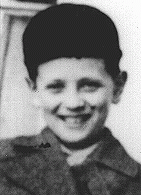
-
Pinchas Gerszonowicz
ID CardPinchas was born into a large family living in the town of Miechow in south central Poland. His father was a machinist and locksmith. Pinchas spent long days studying, either learning Hebrew in the Jewish school or taking general subjects at the public school. He belonged to the Zionist youth organization, Ha Shomer ha-Tsa'ir, and played left wing for a Jewish soccer team. 1933-39: At 13 Pinchas finished school and started work as an apprentice machinist and blacksmith in a building contractor's shop.…
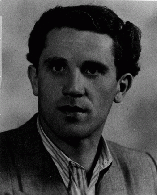
-
Irene Freund
ID CardThe younger of two children, Irene was born to Jewish parents in the industrial city of Mannheim. Her father, a wounded German army veteran of World War I, was an interior decorator. Her mother was a housewife. When the Nazis came to power in 1933, Irene's older brother, Berthold, was attending public school. Three-year-old Irene was at home with her mother. 1933-39: Celebrating Jewish holidays with all of Irene's aunts and uncles was really nice. One of her favorite places was the zoo; she especially…
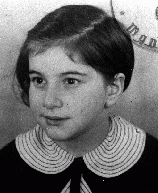
-
Chuna Grynbaum
ID CardChuna was born in a small one-story house that served as both his family's residence and their tailor shop. He was the youngest of nine children born to religious Jewish parents. The family's tailor shop mostly served Starachowice's Catholic Poles. The work was often done in exchange for goods such as firewood or a sack of potatoes. 1933-39: Chuna's father died unexpectedly in June 1939. After returning from synagogue one day, his father lay down to rest. He asked Chuna to close the shade to darken the…

-
Zalie Waldhorn
ID CardZalie was the second of three children born to immigrant Jewish parents. Her Polish-born father was a former officer in the Austro-Hungarian army who had met and married her Hungarian-born mother during World War I. Shortly before Zalie was born, her parents settled in Paris. There, Zalie and her brother and sister grew up in a religious household. 1933-39: Zalie's mother said it was better in Paris than in the poor village in which she grew up. Her mother spoke broken French, but Zalie grew up speaking…
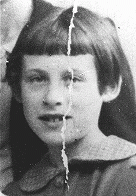
-
Frida Adler
ID CardFrida was the eldest of three daughters born to Jewish parents in a village in the easternmost province of Czechoslovakia. When Frida was 2, her parents moved to Liege, Belgium, a largely Catholic industrial city with many immigrants from eastern Europe. Frida attended Belgian public schools and grew up speaking French. 1933-39: In Liege Frida's family lived in an apartment above a cafe and across the street from a Catholic church. Frida had many Catholic girlfriends at school. At home she spoke Yiddish…
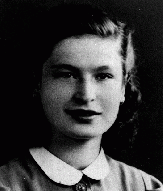
-
Judith Margareth Konijn
ID CardJudith was the younger of two children born to religious, middle-class Jewish parents. Judith's mother, Clara, was Sephardic, a descendant of Jews who had been expelled from Spain in 1492. Her father, Lodewijk, was a traveling representative for a firm based in Amsterdam. The family lived in an apartment in a new section of Amsterdam on the southern outskirts. 1933-39: Judith attended grade school with her cousin Hetty who was the same age. Judith loved to study. Her mother taught piano to students who…
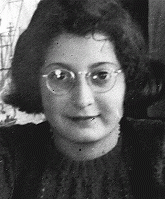
-
Coenraad Rood
ID CardCoenraad was born to a Jewish family in Amsterdam that traced its roots in the Netherlands back to the 17th century. After graduating from public school, Coenraad went on to train as a pastry maker at a trade school. But after completing his training at the age of 13, he decided for health reasons to change professions, and he began to study tailoring. 1933-39: Coenraad finished apprenticing as a tailor in 1937 when he was 20. Then he spent a year working as a nurse in a Jewish home for the permanently…
